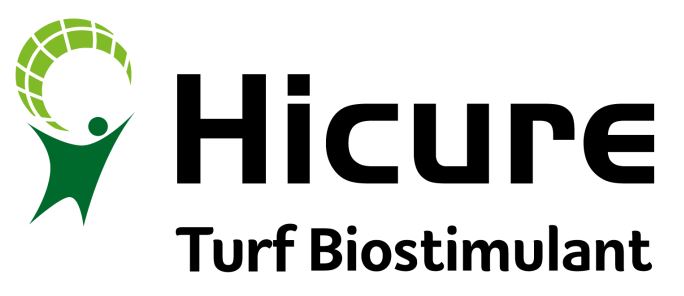New Hicure, the first turf biostimulant for golf course management from Syngenta, heralds the potential for a step change in turf stress mitigation, to counter stress effects associated with changing climatic conditions and intensive play.
Developed to deliver the key protein-building amino acids crucial to build and protect turf plants from stress effects, Hicure can help prevent damage and aid recovery of playing surface quality faster and more effectively. STRI research into turf stress management programmes to maintain golf surface playing conditions throughout then season have shown the benefits in turf colour, smoothness and consistency on putting surfaces.
More than six years of science and investigative trials has resulted in the unique formulation of 18 amino acids in Hicure, along with an instantly available energy source for turf to make most effective use.

Syngenta Technical Manager, Glenn Kirby, highlighted amino acids are the building blocks for proteins that make up all plant structures – each with a different construction. “New research into the molecular activity of plant cells has sought to identify which amino acids are required for key functions.
“That’s given a valuable insight into which amino acids can be effectively supplemented to better prepare plants for stressful periods.
“Whilst turf plants can produce their own amino acids during good growing conditions, where they need to adapt to stressful periods it can lead to an imbalance in the availability of the necessary amino acids.
“Hicure can provide a readily accessible source of the important amino acids to give greater tolerance to stress and see turf through,” he added.
Furthermore, Glenn pointed out that the repurposing of amino acids within the plant during stress periods requires large amounts of energy – which can be particularly challenging where turf is under stress and with reduced photosynthetic capability. “Hicure has been formulated with an instantly available energy source, in the form of specific amiono acids. Supplementing energy enables the plant to make better use of resources for faster recovery.
“Together, Hicure is a perfect balance of amino acids and energy to help plants strengthen cell walls and protect against stress.”
Trials results in the UK and across Europe have shown improved tolerance to a wide range of stresses. Under summer heat conditions, for example, fortnightly applications of Hicure had halved the incidence of leaf damage, compared to untreated.
Improvements in turf quality, coverage and consistency had also been seen in Hicure trials against a wider range of stresses and even herbicide treatments.
“With the incidence of environmental stresses becoming more frequent and more severe in nature with climate change the role of Hicure is expected to become even greater in future turf management programmes,” Glenn advised.
Optimum results have been seen with fortnightly applications of Hicure at a rate of 10 l/ha, or monthly 20l/ha during spring and summer periods. That can typically be incorporated into foliar nutrition and Primo Maxx PGR timings for ease of application, he advocated.
In late summer and autumn rates can be reduced to 5l/ha every two weeks or 10l/ha per month. This helps deliver stronger and stress free turf going into the winter period. Stronger more healthy turf is better able to tolerant disease attack and also recovers more quickly.
Daniel Lightfoot, Syngenta Turf Business Manager, emphasised that R&D had clearly shown that not all biostimulants work as effectively as others, or offer the significant benefits that could be achieved. “We continue to exhaustively test a large number of biostimulant products, and have only selected a small number that have shown the potential to offer effective results.
“Understanding the science of how the product works is essential to advise where it can fit into an agronomic programme,” he advocated. “Turf managers can be confident that any biostimulant from Syngenta has been thoroughly researched and will deliver the benefits they are looking for.”
The focus of Syngenta research is increasingly on enhancing overall plant health, together with the integration of agronomic practices and digital support tools, alongside the intervention of plant protection products where required.
The company’s recent acquisition of Valagro, one of the world’s leading biostimulant and biopesticide businesses, signals a commitment to creating a whole programme approach to plant health.
“As we develop and bring to market innovative fungicides over the coming years, we have the research to understand and recommend how they can be best used in conjunction with Hicure and other inputs to get the best results.”
For UK and Ireland turf specific agronomy and product information go to www.greencast.co.uk


